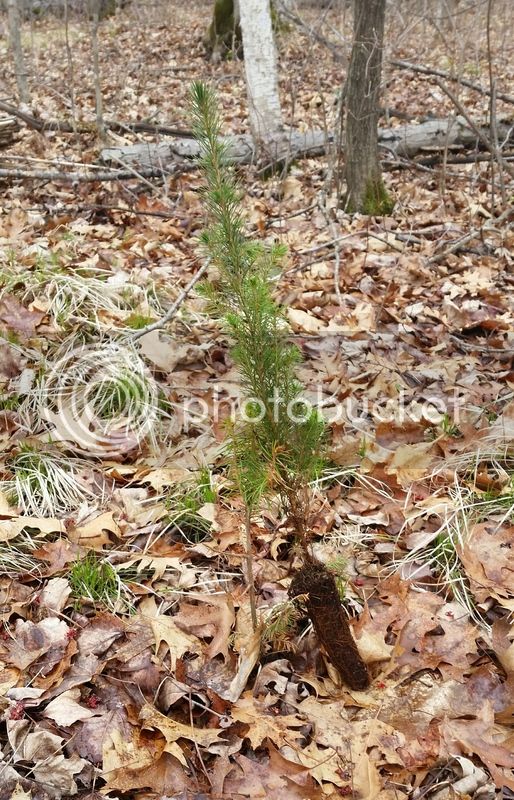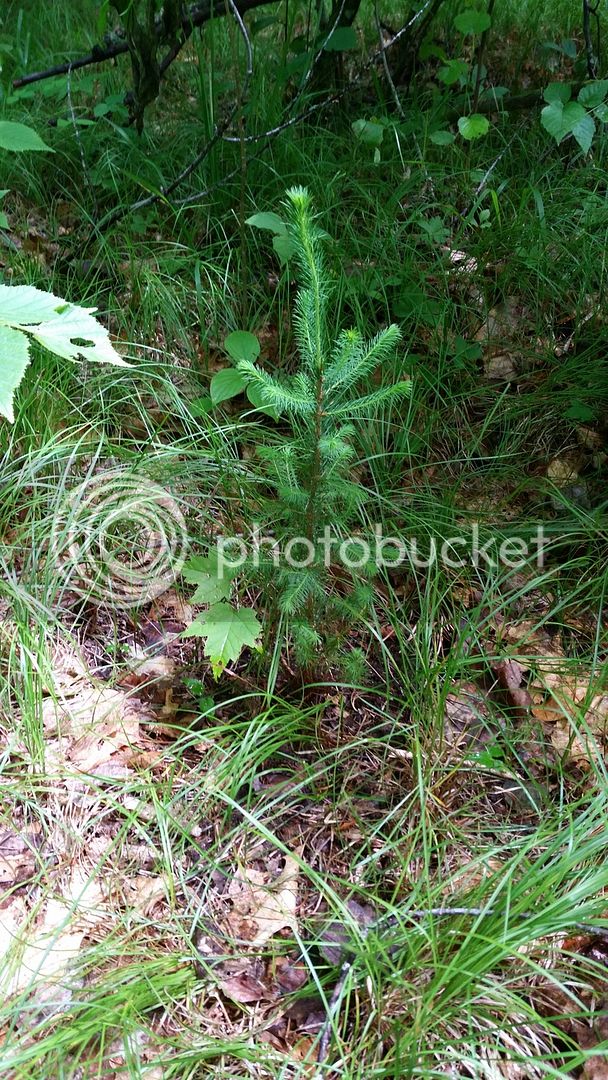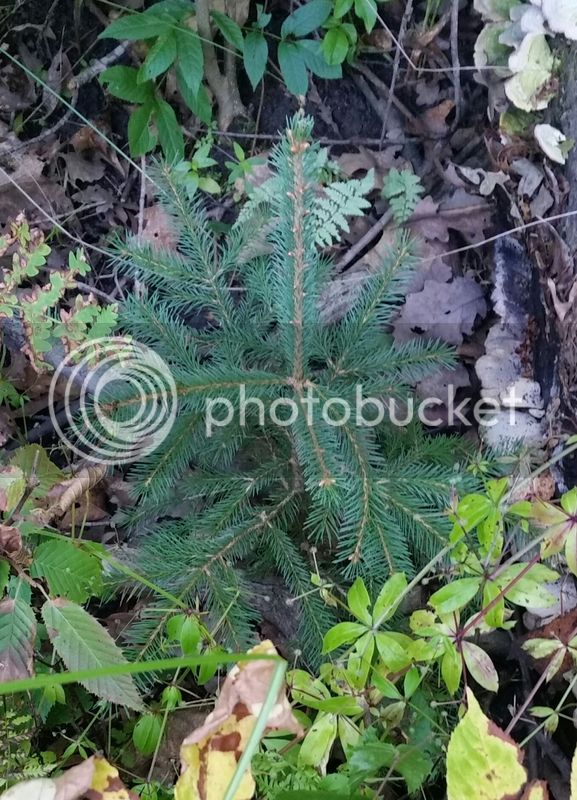-
If you are posting pictures, and they aren't posting in the correct orientation, please flush your browser cache and try again.
Edge
Safari/iOS
Chrome
You are using an out of date browser. It may not display this or other websites correctly.
You should upgrade or use an alternative browser.
You should upgrade or use an alternative browser.
Bowsnbucks
5 year old buck +
Absolutely you can get 2 ft. or more. FYI - bucks love to rub on spruce. We've had a number of them get rubbed, some branches broken - but they bounce back. Don't give up on them.
B
BJE80
Guest
Well I'm excited to get this project going. Glad I can leave them be to some degree and not have to lose sleep. Might delay getting mature a little bit but at least they will make it eventually.
Jim Timber
5 year old buck +
Or they'll just sit there and do nothing, like mine did. :( At least they're not dead. :rolleyes:
I haven't looked at any of my Norways this growing season, but they were planted in 2011 and after putting out what little growth they had stored from the nursery, they've sat at that size ever since. Just too much shade or not the right soil for them at my place. Even one that's in good light hasn't gotten over 2' yet and it's on the edge of a clearing, but that tree actually looks healthy, where the rest of them look like big 2-0's.
I'll get some updated pics of mine when I head up next. I'm thinking tomorrow after our rains pass through tonight.
I haven't looked at any of my Norways this growing season, but they were planted in 2011 and after putting out what little growth they had stored from the nursery, they've sat at that size ever since. Just too much shade or not the right soil for them at my place. Even one that's in good light hasn't gotten over 2' yet and it's on the edge of a clearing, but that tree actually looks healthy, where the rest of them look like big 2-0's.
I'll get some updated pics of mine when I head up next. I'm thinking tomorrow after our rains pass through tonight.
B
BJE80
Guest
Or they'll just sit there and do nothing, like mine did. :( At least they're not dead. :rolleyes:
I haven't looked at any of my Norways this growing season, but they were planted in 2011 and after putting out what little growth they had stored from the nursery, they've sat at that size ever since. Just too much shade or not the right soil for them at my place. Even one that's in good light hasn't gotten over 2' yet and it's on the edge of a clearing, but that tree actually looks healthy, where the rest of them look like big 2-0's.
I'll get some updated pics of mine when I head up next. I'm thinking tomorrow after our rains pass through tonight.
Ok. Now I'm going to just take the optimistic side. Spruces seem to do well on my land and in my soils. They are naturally everywhere.
Jim Timber
5 year old buck +
My Norway spruce are a prime example of not planting the right tree for the soil. :oops: There's no Norways anywhere around me, and I chose them for their *supposed growth habits and not because they were a good fit for my forest type.
Last year I saw a show on PBS about a Norway plantation somewhere in Northern MN where the soil was wrong and their trees are 20 years old, and 8' tall, planted in full sun. It was around that time that I had also been learning more about soils and their effects on growth of different plants (I'm still no expert ;) ). The black spruce I planted this year are actually found in the forest type and tree community that I have on my stand now, so they should be far better suited to growing there. I'm sure the growth I've seen (it's been 2 weeks since this) is also what was stored from the nursery, but they're growing quite well - so I have healthier trees, or happier trees, or both with the blacks.
I've posted this pic before on here. It's a 2011 planted Norway spruce 4a (from an unknown nursery via a wholesale dink who won't be mentioned) that's in a 80% canopy oak grove, with a Black spruce "6" plug from Itasca leaning on it.

Here's one of those blacks as of July 14th, in around 60% shade, roughly 1/4 mile from the Norway above.

Last year I saw a show on PBS about a Norway plantation somewhere in Northern MN where the soil was wrong and their trees are 20 years old, and 8' tall, planted in full sun. It was around that time that I had also been learning more about soils and their effects on growth of different plants (I'm still no expert ;) ). The black spruce I planted this year are actually found in the forest type and tree community that I have on my stand now, so they should be far better suited to growing there. I'm sure the growth I've seen (it's been 2 weeks since this) is also what was stored from the nursery, but they're growing quite well - so I have healthier trees, or happier trees, or both with the blacks.
I've posted this pic before on here. It's a 2011 planted Norway spruce 4a (from an unknown nursery via a wholesale dink who won't be mentioned) that's in a 80% canopy oak grove, with a Black spruce "6" plug from Itasca leaning on it.

Here's one of those blacks as of July 14th, in around 60% shade, roughly 1/4 mile from the Norway above.

Jim Timber
5 year old buck +
But on the bright side, I'll never have to thin the Norways. :p
wiscwhip
5 year old buck +
Norway's aren't generally going to do squat in the shade. BJE might be better off given he is cutting that whole area to the ground before planting, so things like 60% to 80% shade will not be part of his concern. Soil type may come into play, but that is why we all strive to plant a diverse group of plants, so that the failure of one thing does not negate the whole of the process. I totally agree with stu, I wouldn't waste any time or money planting balsams in there, they will likely volunteer in mass numbers anyway.
Jim Timber
5 year old buck +
I have norways in full sun that aren't much bigger than that one.
Jim Timber
5 year old buck +
They looked healthy when I planted them. The one in full sun that's on the edge of my garden looks like a midget tree, but has full lateral branch growth. I was surprised to find it, since I forgot it was there, when I was spraying thistle two weeks ago. It's growing up next to one of the last downed oaks I haven't cut up out of that clearing.
The ones I planted in Shrub Henge are easily lost amongst the weeds, despite also having at least 7 hours of direct light. So it's not just sun. There's something up with the Norways and my soil(s). Norways are supposed to be highly adaptive to different dirt, but as the plantation folks found out, and I'm finding, some sites just don't grow them well. I have paper birch along that entire lot line, so it's not a moisture issue either - unless we're too wet? I find that hard to believe though, because I accidentally planted one of these Norways on the neighbors lot in one of his bogs and that tree was 4' tall 2 years ago.
The ones I planted in Shrub Henge are easily lost amongst the weeds, despite also having at least 7 hours of direct light. So it's not just sun. There's something up with the Norways and my soil(s). Norways are supposed to be highly adaptive to different dirt, but as the plantation folks found out, and I'm finding, some sites just don't grow them well. I have paper birch along that entire lot line, so it's not a moisture issue either - unless we're too wet? I find that hard to believe though, because I accidentally planted one of these Norways on the neighbors lot in one of his bogs and that tree was 4' tall 2 years ago.
Jim Timber
5 year old buck +
There's got to be something about the nutrient supply that's causing the stunted growth. Sun, water, soil - it's all factors, but you can't just say "oh, you need more sun" or water, or whatnot. If there's some reason the nutrients aren't available in the soil (wrong micro organisms breaking down the duff?), then certain plants aren't going to do well. That's what the PBS show was trying to explain. I'd be talking out my exit if I tried to explain it in more technical terms, but by observing the natural plant community, and choosing other species which are also found naturally with those existing species in other regions, you have a far better likelihood of a good match with your introduced types.
bueller
Moderator
I agree. We as land managers would be much happier and have more successful plantings if we stuck to what's already growing in our areas. I'm covered in black oak, jack pine, sedge, and hazelnut on my new place. Rather than trying to reinvent the wheel by planting thousands of different trees/shrubs, I'm focusing more on "amending" what I do have growing to keep them or get them to the right stage of growth preferred by the deer.There's got to be something about the nutrient supply that's causing the stunted growth. Sun, water, soil - it's all factors, but you can't just say "oh, you need more sun" or water, or whatnot. If there's some reason the nutrients aren't available in the soil (wrong micro organisms breaking down the duff?), then certain plants aren't going to do well. That's what the PBS show was trying to explain. I'd be talking out my exit if I tried to explain it in more technical terms, but by observing the natural plant community, and choosing other species which are also found naturally with those existing species in other regions, you have a far better likelihood of a good match with your introduced types.
Jim Timber
5 year old buck +
But you don't have to limit yourself to what's there, you just have to find species which would be found naturally with the existing plant community you have.
In my case, we have red pine, but there's so few of them left (likely due to logging 150 years ago), and no other natural conifers in the area. But, black spruce is naturally found with basswood, oak, maple, birch, and aspen forest types; so it's a good fit for the soils we have since the other trees it's found naturally with are well established and thriving here.
In my case, we have red pine, but there's so few of them left (likely due to logging 150 years ago), and no other natural conifers in the area. But, black spruce is naturally found with basswood, oak, maple, birch, and aspen forest types; so it's a good fit for the soils we have since the other trees it's found naturally with are well established and thriving here.
sandbur
5 year old buck +
Jim-I need to show you the Norway spruce I planted. They sat there for years, but something has happened in the last two years.There's got to be something about the nutrient supply that's causing the stunted growth. Sun, water, soil - it's all factors, but you can't just say "oh, you need more sun" or water, or whatnot. If there's some reason the nutrients aren't available in the soil (wrong micro organisms breaking down the duff?), then certain plants aren't going to do well. That's what the PBS show was trying to explain. I'd be talking out my exit if I tried to explain it in more technical terms, but by observing the natural plant community, and choosing other species which are also found naturally with those existing species in other regions, you have a far better likelihood of a good match with your introduced types.
Like you said, these are in open ground and much different soil than your soil.
All said, I will plant our native spruce instead. white, black, and black hills spruce if you call BHS a native.
Jim Timber
5 year old buck +
I'm not going to do anything with my Norways. The ones that are along the Henge are set inward of the border far enough to where I didn't encounter many of them when I planted the blacks with regard for the survey markers. When I start cutting the oak/maple/aspen/basswood out of the interior side of that row later for my rifle range, it'll expand their sunlight by a few hours a day and maybe they'll all thrive. I still have another 100 Norways disbursed across the Southern 40, and those trees are represented by the one I pictured above. They're hard to find out there amongst the dead leaves and thin grasses.
Jim Timber
5 year old buck +
Here's the one in the garden. It's about knee high. Planted in 2011.


I've never planted Norway or Black Hills Spruce, but I've planted a lot of white spruce and black spruce. My spruce seemed to grow really slowly for at least 3 years, sometimes close to 5 years. Then something changes and they start growing up to a 2 feet per year. I seemed to get more consistent growth at an early age from Red and White pines, but the spruce seem to be closing the height gap quickly.
If your spruce trees are still alive, they might be all right. I think they'll really take off if you can give them a little more sunlight.
If your spruce trees are still alive, they might be all right. I think they'll really take off if you can give them a little more sunlight.
Jim Timber
5 year old buck +
The one pictured is on the West edge of a 1/3 acre clearing. It's got as close to full sun as anything on my property. Even so, the blacks I just planted have put on a bunch of leader height and lateral growth. I'm really excited to see if they'll keep that up, or if it's just what they had stored from the nursery environment.
As the aspen gets culled out, and the oaks are harvested and thinned, things will improve for my spruce. I don't need them to be 50' tall, I just want some more thermal pockets and a fence line on one edge.
As the aspen gets culled out, and the oaks are harvested and thinned, things will improve for my spruce. I don't need them to be 50' tall, I just want some more thermal pockets and a fence line on one edge.
Bowsnbucks
5 year old buck +
Amen on the thermal pockets Jim. Give me some clusters of spruce for windbreaks / thermal cover ANYTIME !!! Deer here love 'em.
Similar threads
- Replies
- 17
- Views
- 1K
- Replies
- 22
- Views
- 1K

